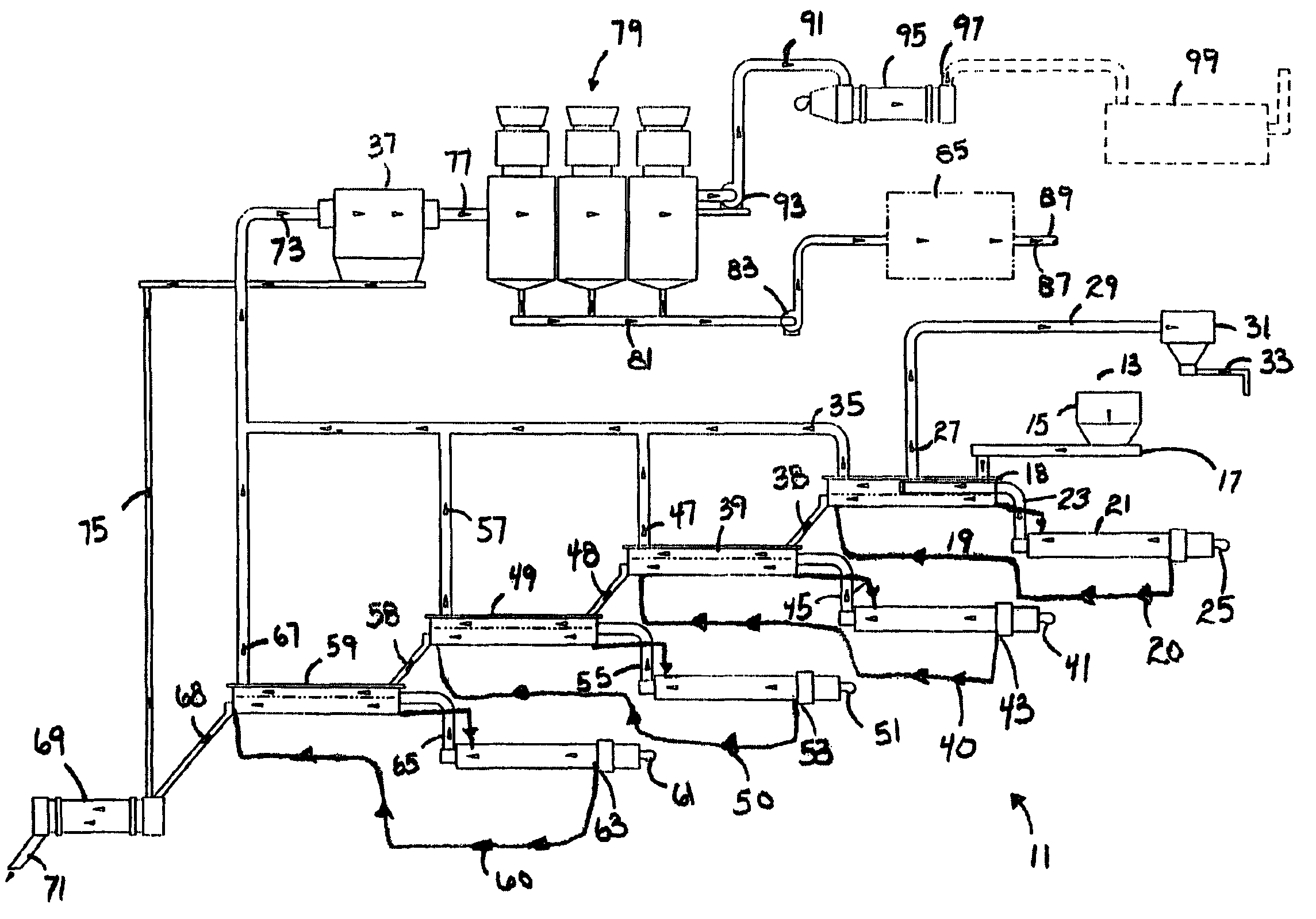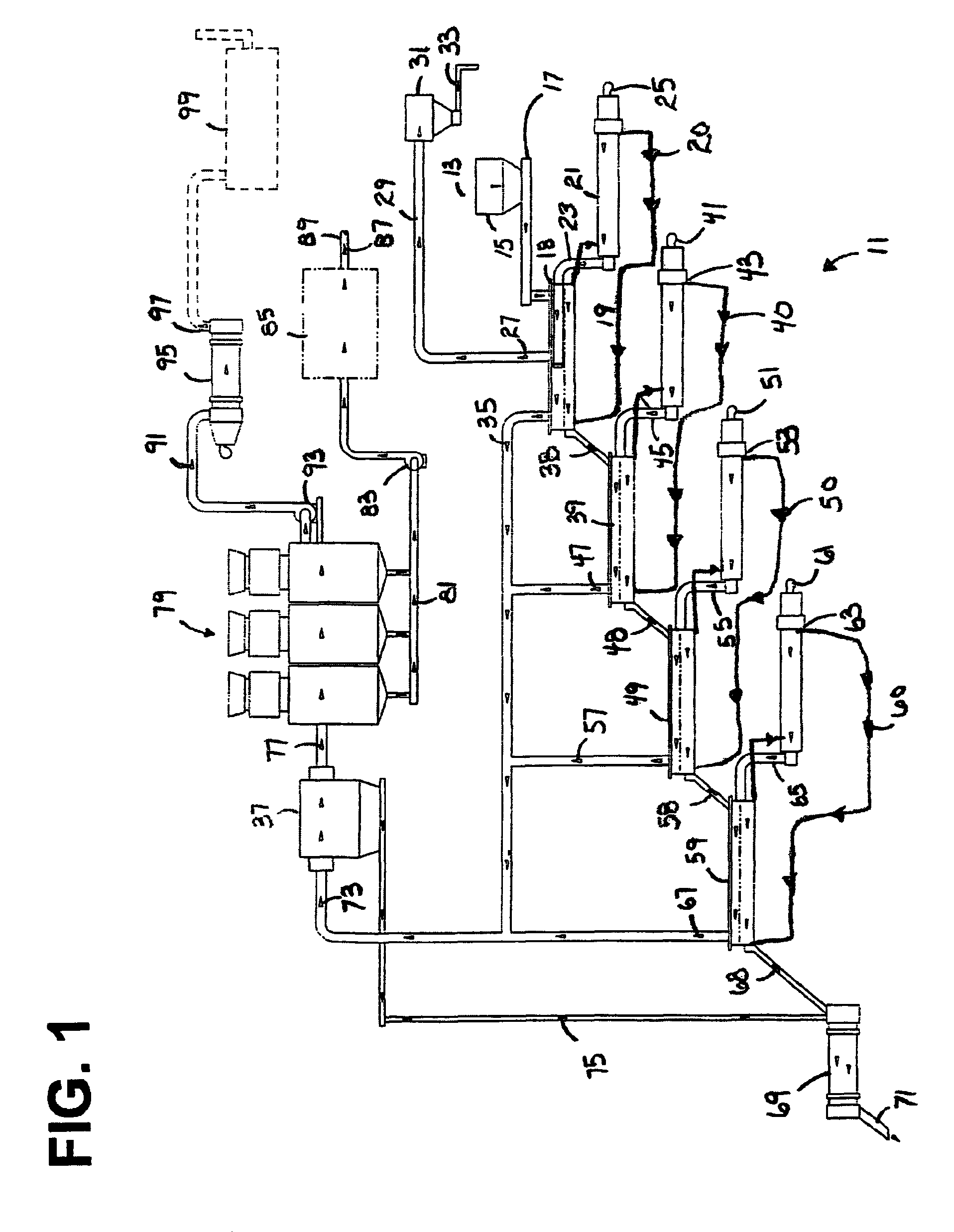Thermal recovery of petroleum crude oil from tar sands and oil shale deposits
a technology of petroleum crude oil and tar sands, which is applied in the direction of hydrocarbon oil cracking process, packaging, chemical/physical/physicochemical process, etc., can solve the problems of increasing costs and achieve the effect of eliminating all possible contamination
- Summary
- Abstract
- Description
- Claims
- Application Information
AI Technical Summary
Benefits of technology
Problems solved by technology
Method used
Image
Examples
Embodiment Construction
[0040]FIGS. 1 and 2A and 2B are schematic representations of the thermal recovery system 11. The thermal recovery system 11 shown in FIGS. 1 and 2A and 2B are examples of embodiments of the present invention. Other sizes and configurations are possible. In an illustrative example, approximately 208 tons of sand are processed per hour at approximately 5,000 tons / day. Tar sand input moisture content is approximately 2%. Sand inlet temperatures are approximately 60° F. and sand exit temperatures are approximately 950° F.
[0041]Raw oil-bearing sand 13 is dumped into a hopper 15. The raw sand 13 in hopper 15 is fed through a conveyor 17 at a predetermined flow rate. The raw sand 13 is conveyed into the first indirectly heated end 18 of a first auger conveyor 19. A first heat exchanger 21 with a first burner 25 heats a first heating fluid 20 to approximately 650° F. The first heat exchanger 21 also creates a first exhaust gas 23 at approximately 650° F., which is used as a sweep gas. The b...
PUM
| Property | Measurement | Unit |
|---|---|---|
| temperature | aaaaa | aaaaa |
| temperature | aaaaa | aaaaa |
| temperature | aaaaa | aaaaa |
Abstract
Description
Claims
Application Information
 Login to View More
Login to View More - R&D
- Intellectual Property
- Life Sciences
- Materials
- Tech Scout
- Unparalleled Data Quality
- Higher Quality Content
- 60% Fewer Hallucinations
Browse by: Latest US Patents, China's latest patents, Technical Efficacy Thesaurus, Application Domain, Technology Topic, Popular Technical Reports.
© 2025 PatSnap. All rights reserved.Legal|Privacy policy|Modern Slavery Act Transparency Statement|Sitemap|About US| Contact US: help@patsnap.com



